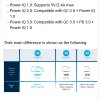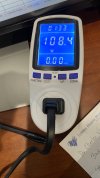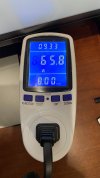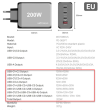Since this is a thread about chargers, I’d like to add my experience with one third-party charger.
Before my
Air 3 even arrived, I got an
Anker 317 100W charger from Amazon for about USD$25.
It’s advertised as a USB-C PD charger for MacBooks/Laptops/Phones and thousands of other devices.
I also have an energy meter throughout my entire house and I can see live power usage from all my outlets, so I had the unique ability to test the actual power coming out of my chargers etc
I plugged it into the
Air 3 Charging Hub using the cable that came with it that is rated for 100W, and I wasn’t able to get more than 50-60 Watts. I’ve since recharged three batteries about 6-8 times total, including some that were at ~20% and I still couldn’t get 100W from the Anker brick.
I then used my MacBook’s 65W USB-C brick and I instantly got the full 65W going to the charging hub until the battery was above ~80%, which is when it slowly ramped down until full charge.
After this, I decided to use the Anker brick to charge my MacBook Pro. I used the USB-C cable that came with the Anker brick instead of Apple’s USB-C to MagSafe cable. Lo and behold, my MacBook, which was at 75% charge, showed a 75W draw. in addition, the Mac identified the charger as a “100W” charger. So it totally can provide 100W and the cable comes with it is indeed rated at 100W, it just won’t charge the
Air 3 Hub at full power.
I have since purchased the
Oraimo AniFast 120W charger hub from Amazon for about USD$29. This has more ports and also comes with a 100W rated USB-C cable. This charger is also advertised as a PPS charger (beside PD) so I am hoping I will get full output. I will post results.















